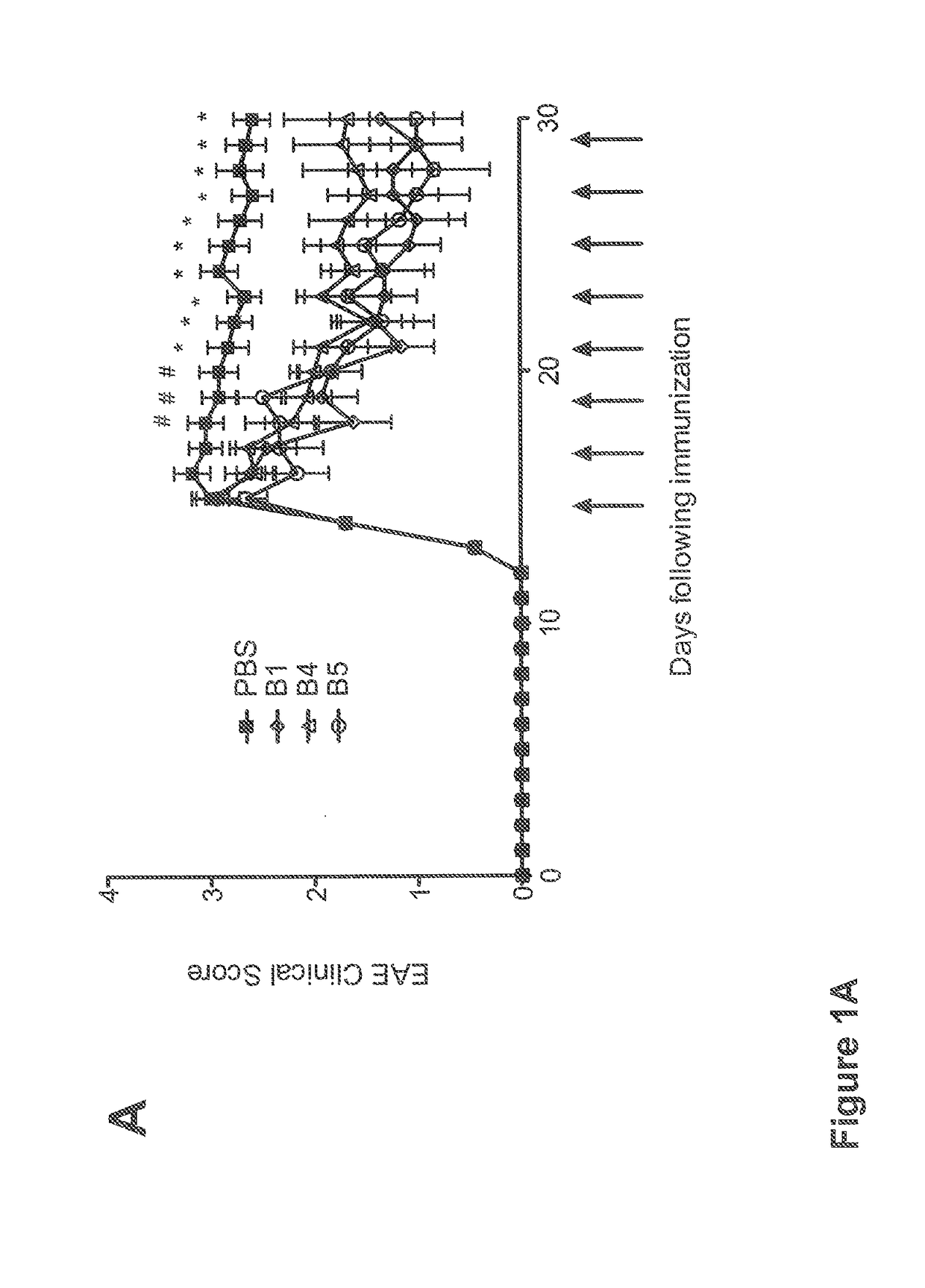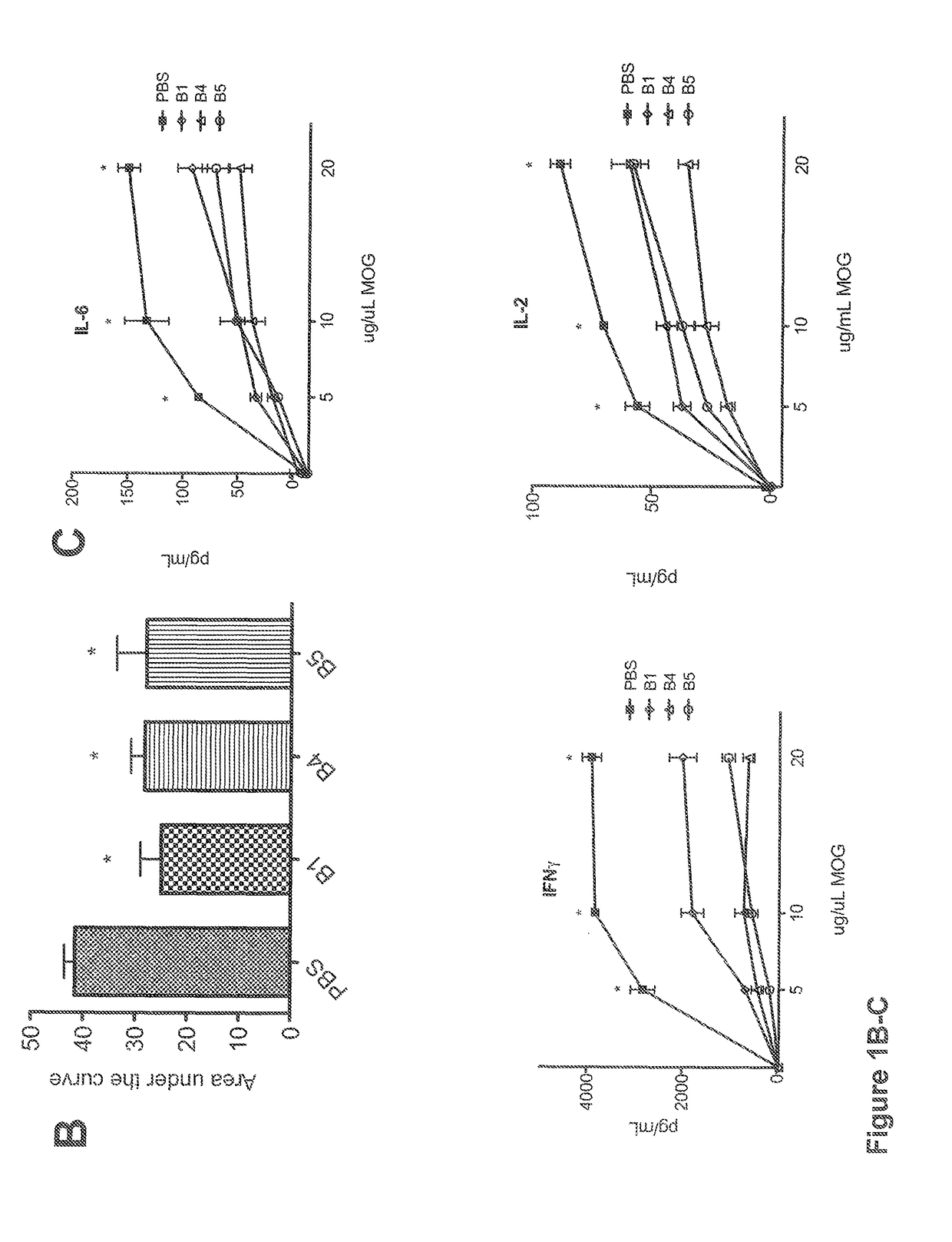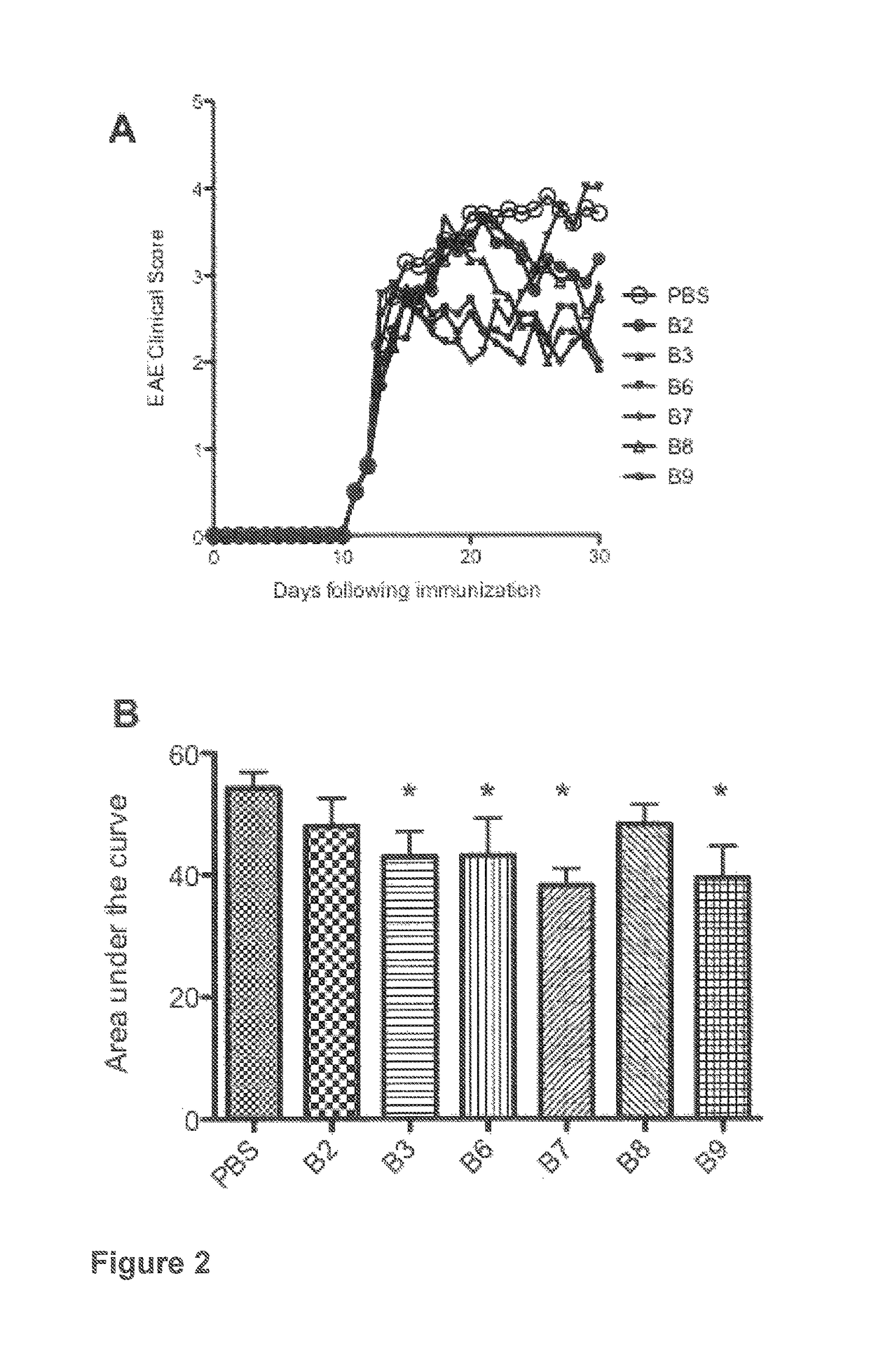Small heat shock proteins and active fragments thereof as a therapy for inflammation and ischemia
a technology active fragments, which is applied in the direction of peptide/protein ingredients, antibody medical ingredients, peptide sources, etc., can solve the problem of not being able to actively re-fold the protein itself, and achieve the effect of increasing the activity of small heat shock proteins
- Summary
- Abstract
- Description
- Claims
- Application Information
AI Technical Summary
Benefits of technology
Problems solved by technology
Method used
Image
Examples
example 1
Molecular Chaperone Dependent Therapeutic Function of Small Heat Shock Proteins in Autoimmune Demyelination
[0145]Since cryab mRNA and protein levels have been shown to be upregulated in MS brains, we investigated if it was also elevated in the plasma of MS patients and EAE mice. We found that plasma levels of cryab were significantly higher in MS patients compared to normal healthy individuals and this difference was also seen in plasma samples taken from EAE mice. This suggested that endogenous cryab is not just being produced intracellularly in the brain, but that this molecule is being released into the bloodstream where it might be mediating its therapeutic effects.
[0146]Plasma levels of HSPB1 were then measured. It was found that HSPB1 plasma levels were also elevated in plasma from both MS patients and EAE mice. The protective and therapeutic function of cryab may not be specific to cryab, but rather might be a common characteristic of the family of small heat shock proteins.
[...
example 2
Alpha B Crystallin is an Endogenous Immunomodulatory Response Element that can be Used as a Therapeutic 12 Hours after Stroke
[0159]This report describes an effective treatment of stroke, even 12 h after onset, by the administration of alphaB-crystallin (Cryab), an endogenous immunomodulatory neuroprotectant. In Cryab− / − mice, there was increased lesion size and diminished neurologic function after stroke compared to wild-type mice. This difference was in part due to deficiency of Cryab in the immune system. Increased plasma Cryab was detected after experimental stroke in mice and after stroke in human patients. Administration of Cryab even 12 hours post-experimental stroke provided clinical benefit and reduced stroke pathology. Inflammatory cytokines associated with stroke pathology were reduced with exogenous administration. Cryab is an endogenous anti-inflammatory and neuroprotectant molecule produced after stroke, whose beneficial properties can be augmented when administered the...
example 3
A Peptide Exhibiting Chaperone Activity From Alpha B Crystallin in Therapeutic in EAE
[0186]Alpha B crystallin, also known as heat shock protein B5, HspB5, is a member of small heat shock protein (sHsp) family. It is a temperature sensitive chaperone known to inhibit the aggregation of partially denatured proteins, which do not use ATP to refold proteins. The family of small heat shock proteins bind partially unfolded, hydrophobic structures and prevent their aggregation, and are expressed in a variety of long-lived cells including neurons and muscle. Transcription is induced by a variety of cellular insults such as free radical oxidation, temperature increase, or hypoxia.
[0187]The crystal structure has been determined, and it has been shown that the beta barrels of each subunit form an extended beta pleated sheet creating a major groove between the two subunits. Electron density was found in the groove corresponding to residues from one of the amino terminal extensions, which could ...
PUM
| Property | Measurement | Unit |
|---|---|---|
| molecular weights | aaaaa | aaaaa |
| molecular weights | aaaaa | aaaaa |
| molecular weight | aaaaa | aaaaa |
Abstract
Description
Claims
Application Information
 Login to View More
Login to View More - R&D
- Intellectual Property
- Life Sciences
- Materials
- Tech Scout
- Unparalleled Data Quality
- Higher Quality Content
- 60% Fewer Hallucinations
Browse by: Latest US Patents, China's latest patents, Technical Efficacy Thesaurus, Application Domain, Technology Topic, Popular Technical Reports.
© 2025 PatSnap. All rights reserved.Legal|Privacy policy|Modern Slavery Act Transparency Statement|Sitemap|About US| Contact US: help@patsnap.com



